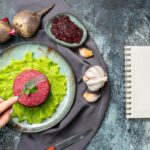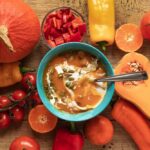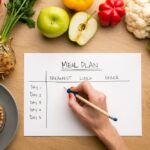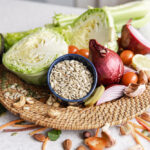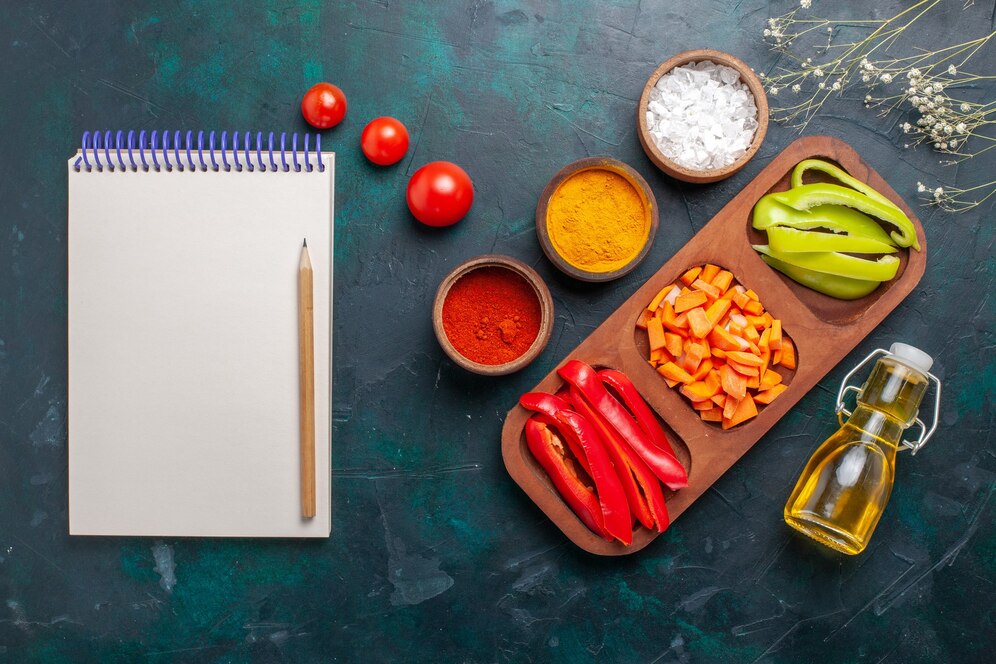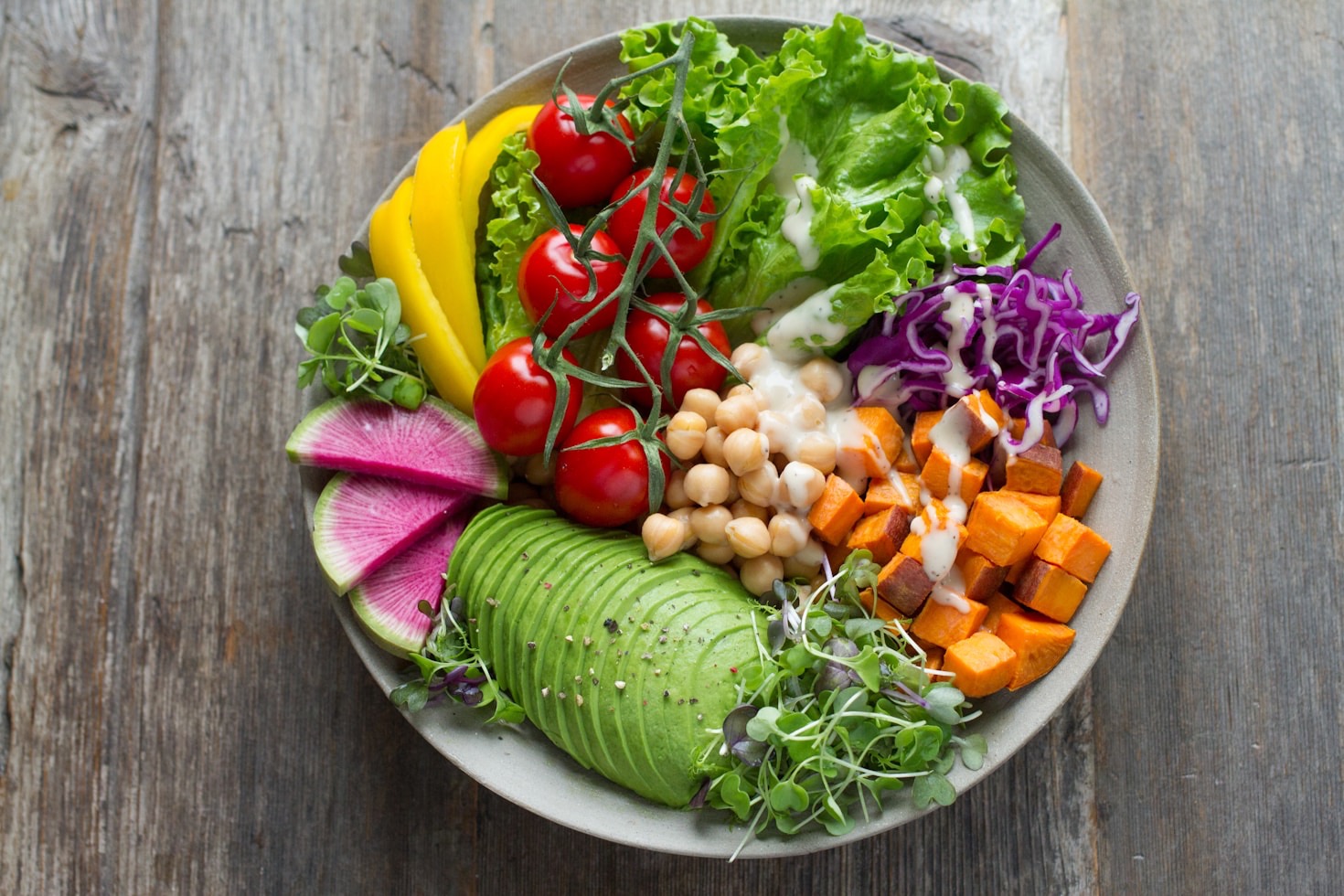Do you dream of holding your own vegan cookbook, filled with recipes you love and cherish? Perhaps you want to share your unique plant-based creations, preserve family recipes (veganized!), or establish yourself as a voice in the vibrant vegan community. It’s a wonderful ambition!
Creating a cookbook is undoubtedly a significant undertaking, requiring passion, planning, and persistence. But it’s absolutely achievable! This guide breaks down the key steps involved, offering practical tips to help you navigate the journey from initial idea to finished book.
How to Create Your Own Vegan Cookbook: Pro Tips & Ideas
Step 1: Define Your Vision: Theme, Audience & Angle
A successful cookbook needs a clear focus. Simply being “vegan” is often too broad in today’s market. You need a compelling theme and angle.
- Find Your Unique Niche: What makes your cooking special? Consider focusing on:
- Examples: Quick Weeknight Vegan Meals, Healthy Vegan Breakfasts, Vegan Gujarati Thalis (a fantastic local angle for Vadodara!), Budget Vegan Baking, Plant-Based Vegan Desserts for Beginners, Kid-Approved Vegan Lunches, Global Street Food Made Vegan, Traditional Indian Sweets Made Vegan.
- Know Your Target Reader: Who are you creating this book for? Busy professionals in urban India? New vegans globally? Students looking for affordable meals? Families wanting healthier options? Understanding your audience deeply will guide your recipe selection, writing style, and even design choices.
- What’s Your Unique Selling Proposition (USP)? What sets your cookbook apart? Is it your personal story, stunning photography capturing local culture, a focus on specific regional ingredients readily available in Gujarat, exceptionally clear instructions for beginners, or perhaps a unique fusion concept?
- Author Insight: Your genuine passion for your chosen niche is contagious and will sustain you through the long process.
Step 2: Curate, Test & Refine Your Recipes
This is the absolute core of your cookbook. Your recipes must be reliable, delicious, and clearly written.
- Select Recipes That Fit: Choose your strongest recipes that perfectly align with your theme and target audience. Ensure a good balance and variety within the scope of your book (e.g., different types of dishes if it’s a general cookbook, or different techniques if it’s focused on baking).
- Rigorous Recipe Testing:Reality Check: This stage is crucial, time-consuming, and cannot be skipped.
- Test every single recipe yourself – multiple times – ensuring consistency in results.
- Crucially, have other people test your recipes using only your written instructions. Friends, family, or dedicated recipe testers can provide invaluable feedback. Did the recipe work for them? Was anything confusing? Were ingredients easy to find (consider your target audience’s location)?
- Accurately record preparation time, cooking time, and the final yield (number of servings).
- Standardize Measurements & Instructions: Consistency is key for user trust.
- Decide on your measurement system (e.g., primarily metric grams/ml with cup conversions, or vice-versa) and stick to it throughout. Providing both is often ideal for broader appeal.
- Write instructions as clear, numbered steps. Start each step with an action verb (e.g., “Chop,” “Sauté,” “Blend”).
- Define any terms or techniques that might be unfamiliar to your audience.
- Be specific with ingredients, especially vegan ones (e.g., “full-fat coconut milk,” “firm tofu, pressed and cubed,” specify type of oil if important, mention vegan butter brands if relevant/accessible).
- Craft Engaging Headnotes: The introductory paragraph before each recipe is your chance to connect. Share a brief story behind the dish, offer serving suggestions (e.g., “pairs well with jeera rice”), explain a key ingredient or technique, provide substitution ideas, or offer a storage tip. This adds personality and value.
Step 3: Capture the Deliciousness: Photography & Styling
In today’s visually driven world, cookbook photography is incredibly important. It needs to make readers want to cook your food.
- DIY Photography: This is achievable if you invest time in learning the basics:
- Lighting: Natural light is almost always best for food. Learn to use window light effectively (often side-lighting works well). Avoid harsh overhead kitchen lights or direct sunlight. Understand diffusion and using reflectors (even white card works).
- Composition & Styling: Keep your styling consistent with your book’s theme. Often, simple is better – let the food be the hero. Choose backgrounds and props (dishes, cutlery, linens) that complement the food without distracting. Think about color, texture, and composition rules (like the rule of thirds).
- Camera & Editing: While a DSLR offers more control, modern smartphone cameras are incredibly capable. Learn basic photo editing skills (adjusting brightness, contrast, white balance, sharpness) using software like Adobe Lightroom or user-friendly apps like Snapseed or VSCO.
- Hiring a Professional: If your budget allows, working with a professional food photographer and potentially a food stylist can make a huge difference in the final quality and appeal of your book. Research local photographers in Vadodara or your region, review their portfolios carefully, and get quotes.
- Author Insight: Create a “shot list” – plan which recipes need photos and think about the story each photo should tell. Not every recipe might need a photo, but key dishes and chapter openers usually do.
Step 4: Write Engaging Supporting Content
Your cookbook needs more than just a list of recipes.
- Compelling Introduction: This is your hook! Share your personal journey with veganism or cooking, explain the philosophy behind the cookbook, and warmly welcome the reader.
- Chapter Introductions: Briefly introduce each section, setting the tone and explaining what the reader will find (e.g., “Hearty Main Courses,” “Festive Sweets,” “Everyday Sabzis”).
- Useful Extra Sections (Optional but Recommended):
- Vegan Pantry Staples: Especially helpful if focusing on specific cuisines (e.g., essential spices and lentils for Indian vegan cooking).
- Basic Techniques: Explain any methods used frequently (e.g., how to press tofu, make cashew cream, temper spices).
- Ingredient Notes: Provide information on potentially unfamiliar ingredients, especially local ones (e.g., different types of millet/gourds common in Gujarat), suggest substitutions, or advise on sourcing.
- Equipment Guide: List any special equipment needed (though aim for accessibility).
- Essential Back Matter: Include a heartfelt Author Bio, Acknowledgements (thanking testers, family, etc.), and a comprehensive Recipe Index (index by main ingredient and recipe name at minimum – crucial for usability!).
Step 5: Editing & Proofreading: Don’t Skip This!
Reality Check: Errors, typos, and inconsistencies can significantly detract from your cookbook’s credibility and usability. Editing is vital.
- Self-Editing First: After drafting, step away, then come back with fresh eyes. Read everything carefully – intro, headnotes, recipes, index. Check for clarity, consistency (ingredient names, measurements, tone), and flow. Reading recipes aloud helps catch awkward phrasing or missing steps. Use spellcheck and grammar tools, but they won’t catch everything.
- Hire Professionals (Highly Recommended): Investing in professional editing is one of the best things you can do for your book.
- Copyeditor: Focuses on grammar, spelling, punctuation, consistency, clarity, word choice, and adherence to a style guide. They ensure recipes are formatted consistently and instructions are unambiguous.
- Proofreader: Performs the final check after design/layout to catch any lingering typos, formatting errors, or awkward page breaks before the book goes public.
- Beta Readers: Ask individuals who represent your target audience (especially those who enjoy cooking) to read through the manuscript and provide feedback. Were the recipes easy to follow? Was anything confusing?
Step 6: Design & Formatting: Bringing It Together
The visual presentation significantly impacts how readers perceive and use your cookbook.
- Layout & Style: Choose fonts that are easy to read, especially for the recipe instructions. Select a color palette and overall design aesthetic that matches your cookbook’s theme and your personal brand. Ensure ample white space and a logical, uncluttered layout for recipes.
- Design Options:
- DIY: Software like Canva offers user-friendly templates suitable for simpler layouts. For professional-level control (but with a steeper learning curve), Adobe InDesign is the industry standard. This requires design skills or a willingness to learn.
- Hire a Book Designer: Professionals specializing in cookbook design understand how to balance text, images, and layout effectively for both print and digital formats. They can handle interior layout and cover design.
- Cover Design: Your cover is your primary marketing tool. It needs to be eye-catching, instantly communicate the book’s theme and cuisine, and feature the title and author name clearly. Professional cover design is often a worthwhile investment.
- Indexing: A thorough index is crucial for usability. Readers should be able to easily find recipes by main ingredient (e.g., “Chickpeas,” “Okra,” “Mango”) or recipe title. Indexing can be done manually, using software features (like in InDesign), or by hiring a professional indexer.
- Tool Tip: While less common for image-heavy cookbooks, Vellum (Mac only) is excellent software for formatting text-heavy books (ebooks and print interiors) easily.
Step 7: Choose Your Publishing Path
How will your cookbook reach its audience?
- Self-Publishing:
- Pros: Complete creative control over content and design, potentially higher royalty rates per book sold, faster path from manuscript to published book, ability to easily make updates.
- Cons: You bear full responsibility and cost for editing, design, formatting, marketing, distribution, and inventory management (if not using Print-on-Demand).
- Platforms: Amazon Kindle Direct Publishing (KDP) is the largest platform for ebooks and Print-on-Demand (POD) paperbacks, operating widely including in India. IngramSpark offers broader distribution channels, potentially reaching more bookstores, and is often used alongside KDP.
- India Context: KDP makes self-publishing accessible in India for both ebook and paperback formats (printed on demand). You might also explore local Vadodara printers for small, high-quality print runs for local sales or special editions, but managing inventory and distribution is more complex.
- Traditional Publishing:
- Pros: The prestige and validation of a publishing house, access to their professional team (editors, designers, marketers, sales), wider potential distribution in bookstores, possibility of an advance payment against royalties.
- Cons: Highly competitive market, you typically need a literary agent to submit your work, requires writing a detailed book proposal, less creative control over final title/cover/design, lower royalty percentages, significantly longer timeline (often 18 months to 2+ years from signing contract to publication).
- Process: Research literary agents who represent cookbooks (especially vegan or international cuisine). Write a compelling book proposal that outlines your unique concept, target audience, author platform (your existing reach via blog/social media), marketing ideas, competing titles, and includes sample chapters/recipes and photos.
- Publishing Pathway: Consider your primary goals (creative control vs. wide distribution), budget, timeline, technical skills, and marketing willingness when deciding which path suits you best.
Step 8: Marketing & Launch (Especially for Self-Publishing)
If you self-publish, you are also the chief marketer!
- Build Anticipation: Start talking about your cookbook project early on your blog, social media channels (@[YourHandle]), and email list. Share behind-the-scenes glimpses, recipe testing snippets, and cover reveals.
- Develop a Launch Plan: Choose a launch date. Set up pre-orders if possible (helps with early sales velocity). Plan specific activities for launch week (e.g., special introductory price, social media blitz, collaborations with other bloggers/influencers, email campaign).
- Gather Reviews: Encourage early readers (your beta readers, launch team, initial buyers) to leave honest reviews on platforms like Amazon and Goodreads. Positive reviews are powerful social proof.
- Leverage Your Platform: Announce the launch everywhere you have an online presence. Write blog posts related to the cookbook. Run contests or giveaways. Consider targeted online advertising (Amazon Ads, Facebook/Instagram Ads).
- Local Angle (Vadodara/Gujarat): Could you connect with local vegan restaurants, organic stores, or community groups? Perhaps offer a small launch event, cooking demo, or book signing at a local venue or market?
Conclusion
Creating your own vegan cookbook is a significant yet incredibly fulfilling journey. It requires a blend of culinary passion, meticulous planning, creative flair, and sheer persistence. From honing your unique vision and perfecting your recipes to navigating the complexities of design, editing, and publishing, each step plays a vital role.
Embrace the process, trust your unique voice and perspective, share your love for delicious vegan food authentically, and take pride in bringing your cookbook dream to the page!
Further Exploration
- Resources for Writing Compelling Recipe Headnotes
- Beginner and Advanced Food Photography Tutorials
- A Step-by-Step Guide to Self-Publishing on Amazon KDP
- How to Write a Winning Cookbook Proposal
- Finding and Collaborating With Freelance Editors and Designers
- Understanding Copyright and Permissions for Authors

